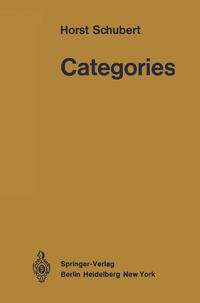
Categorical methods of speaking and thinking are becoming more and more widespread in mathematics because they achieve a unifi cation of parts of different mathematical fields; frequently they bring simplifications and provide the impetus for new developments. The purpose of this book is to introduce the reader to the central part of category theory and to make the literature accessible to the reader who wishes to go farther. In preparing the English version, I have used the opportunity to revise and enlarge the text of the original German edition. Only the most elementary concepts from set theory and algebra are assumed as prerequisites. However, the reader is expected to be mathe to follow an abstract axiomatic approach. matically sophisticated enough The vastness of the material requires that the presentation be concise, and careful cooperation and some patience is necessary on the part of the reader. Definitions alway precede the examples that illuminate them, and it is assumed that the reader is familiar with some of the algebraic and topological examples (he should not let the other ones confuse him). It is also hoped that he will be able to explain the con cepts to himself and that he will recognize the motivation.